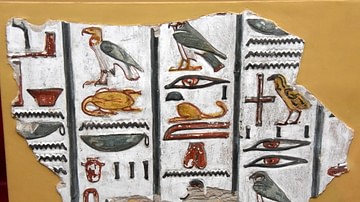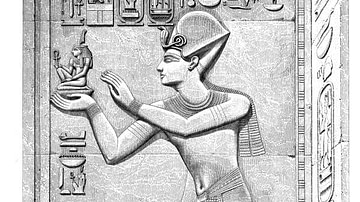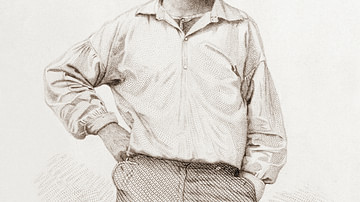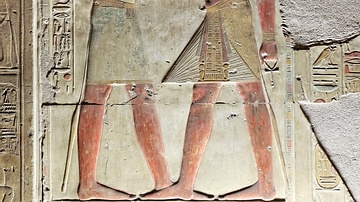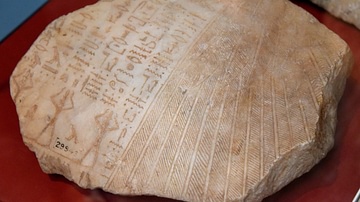Illustration
The mummy of the Egyptian pharaoh Seti I (Sety, Sethi, or Sethos) was transported to Dier- el-Bahri in around 968 BCE. The tomb itself was discovered by Giovanni Belzoni in the 19th century CE. Belzoni found this rope hanging from a small aperture above the well of Seti I's tomb. He found that this rope was made of twisted strands of halfa grass. Radio-carbon examination of this rope has dated it to 950 BCE (plus minus 50 years). Therefore, this rope might have been used during the removal process of the mummy from the tomb. Third Intermediate Period, 1010-890 BCE. From the tomb of Seti I in the Valley of the Kings at Thebes, modern-day Egypt. (The British Museum, London).
About the Author
Cite This Work
APA Style
Amin, O. S. M. (2018, March 21). Halfa Grass Rope from the Tomb of Seti I. World History Encyclopedia. Retrieved from https://www.worldhistory.org/image/8361/halfa-grass-rope-from-the-tomb-of-seti-i/
Chicago Style
Amin, Osama Shukir Muhammed. "Halfa Grass Rope from the Tomb of Seti I." World History Encyclopedia. Last modified March 21, 2018. https://www.worldhistory.org/image/8361/halfa-grass-rope-from-the-tomb-of-seti-i/.
MLA Style
Amin, Osama Shukir Muhammed. "Halfa Grass Rope from the Tomb of Seti I." World History Encyclopedia. World History Encyclopedia, 21 Mar 2018. Web. 30 Mar 2025.



